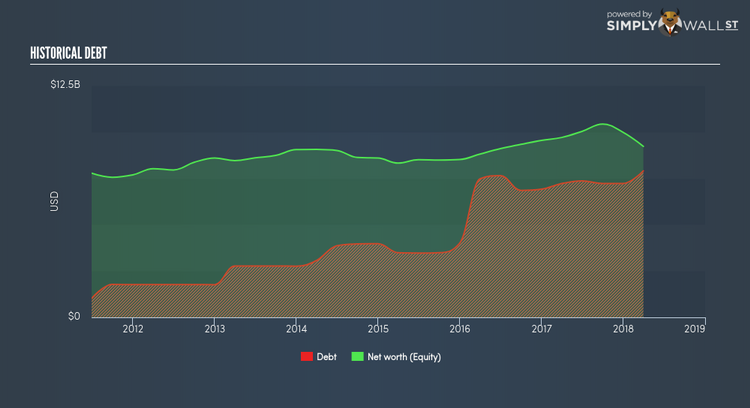Is Stryker Corporation’s (NYSE:SYK) Balance Sheet A Threat To Its Future?

There are a number of reasons that attract investors towards large-cap companies such as Stryker Corporation (NYSE:SYK), with a market cap of US$60.74B. Doing business globally, large caps tend to have diversified revenue streams and attractive capital returns, making them desirable investments for risk-averse portfolios. But, the health of the financials determines whether the company continues to succeed. This article will examine Stryker’s financial liquidity and debt levels to get an idea of whether the company can deal with cyclical downturns and maintain funds to accommodate strategic spending for future growth. Note that this information is centred entirely on financial health and is a high-level overview, so I encourage you to look further into SYK here. Check out our latest analysis for Stryker
Does SYK produce enough cash relative to debt?
SYK has sustained its debt level by about US$7.22B over the last 12 months made up of current and long term debt. At this stable level of debt, SYK’s cash and short-term investments stands at US$2.84B for investing into the business. Moreover, SYK has produced cash from operations of US$1.56B over the same time period, leading to an operating cash to total debt ratio of 21.59%, signalling that SYK’s debt is appropriately covered by operating cash. This ratio can also be interpreted as a measure of efficiency as an alternative to return on assets. In SYK’s case, it is able to generate 0.22x cash from its debt capital.
Does SYK’s liquid assets cover its short-term commitments?
At the current liabilities level of US$3.49B liabilities, it appears that the company has maintained a safe level of current assets to meet its obligations, with the current ratio last standing at 2.29x. Generally, for Medical Equipment companies, this is a reasonable ratio since there is a bit of a cash buffer without leaving too much capital in a low-return environment.
Does SYK face the risk of succumbing to its debt-load?
SYK is a relatively highly levered company with a debt-to-equity of 85.70%. This is common amongst large-cap companies because debt can often be a less expensive alternative to equity due to tax deductibility of interest payments. Since large-caps are seen as safer than their smaller constituents, they tend to enjoy lower cost of capital. By measuring how many times SYK’s earnings can cover interest payments, we can evaluate whether its level of debt is sustainable or not. As a rule of thumb, a company should have earnings before interest and tax (EBIT) of at least three times the size of net interest. In SYK’s case, the ratio of 16.05x suggests that interest is amply covered. It is considered a responsible and reassuring practice to maintain high interest coverage, which makes SYK and other large-cap investments thought to be safe.
Next Steps:
SYK’s cash flow coverage indicates it could improve its operating efficiency in order to meet demand for debt repayments should unforeseen events arise. Though, the company exhibits proper management of current assets and upcoming liabilities. Keep in mind I haven’t considered other factors such as how SYK has been performing in the past. I suggest you continue to research Stryker to get a better picture of the stock by looking at:
Future Outlook: What are well-informed industry analysts predicting for SYK’s future growth? Take a look at our free research report of analyst consensus for SYK’s outlook.
Valuation: What is SYK worth today? Is the stock undervalued, even when its growth outlook is factored into its intrinsic value? The intrinsic value infographic in our free research report helps visualize whether SYK is currently mispriced by the market.
Other High-Performing Stocks: Are there other stocks that provide better prospects with proven track records? Explore our free list of these great stocks here.
To help readers see pass the short term volatility of the financial market, we aim to bring you a long-term focused research analysis purely driven by fundamental data. Note that our analysis does not factor in the latest price sensitive company announcements.
The author is an independent contributor and at the time of publication had no position in the stocks mentioned.

 Yahoo Movies
Yahoo Movies 

